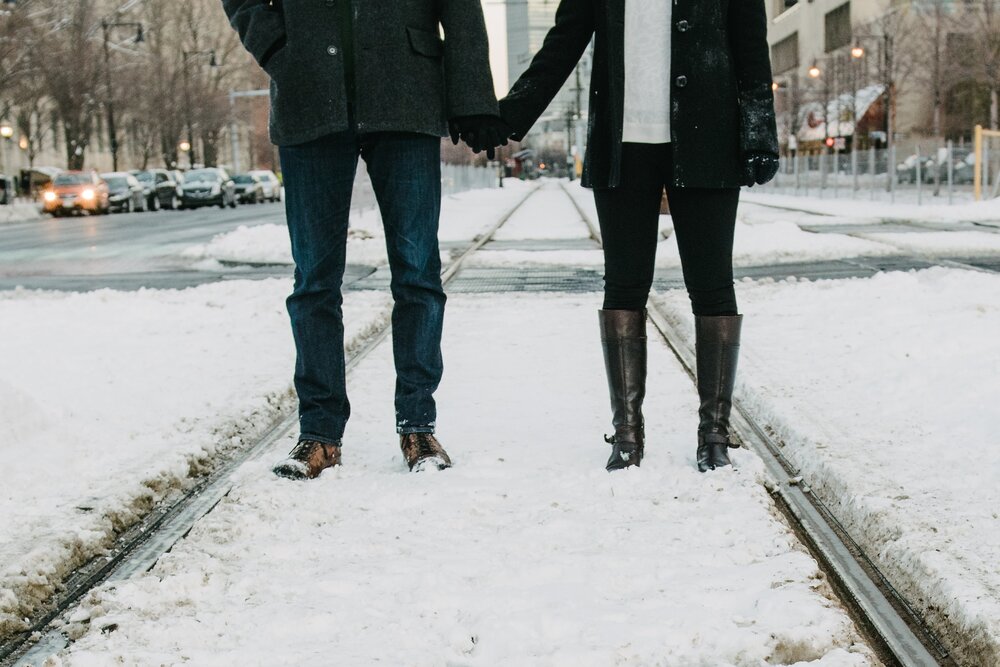
Winter is coming, and that means “cuffing season” is about to get underway. Cuffing season is a term that, to the best of my knowledge, popped up about 10 years ago to describe the tendency for people to couple-up during the coldest and darkest months of the year.
Increased interest in dating and relationships during the winter can be seen from multiple vantage points. For instance, Google searches for sex and relationships rise, as do sign-ups for online dating services. People are also more likely to change their relationship status on social media. So what’s behind this trend anyway? Why do people seem to become more interested in relationships in the winter?
This is likely a biopsychosocial phenomenon, meaning that biological, psychological, and social factors are all working together to produce it. On the biological side, one of the likely contributing factors is changes in sunlight exposure. Sunlight affects production of the neurotransmitter serotonin [1]. Serotonin is a key chemical in the brain for regulating mood. When there’s more of it, we tend to be happier (which, incidentally, is why a lot of antidepressant medications are designed to keep serotonin levels high).
During the winter, the brain produces less serotonin due to less sunlight exposure. This is why some people experience the “winter blues,” and it’s possible that people are compensating for this change in mood by going out and seeking sexual and/or romantic connections.
On the psychosocial side, people may feel more pressure to be partnered during the winter due to the fact that there are several major holidays, along with lots of family gatherings and parties. All of these social events may make some people feel self-conscious if they don’t have a date. Also, parents and family often put pressure on single folks at this time of year by repeatedly asking when they’re going to “settle down” or get married.
Then there’s also the fact that it’s colder during the winter and lower temperatures might make the prospect of snuggling up to someone at night seem all the more appealing. Why wear socks to bed or get out extra blankets when you could cuddle up to someone or “Netflix and chill” instead?
Is cuffing season a millennial thing? It may be to some degree, given that young adults today are living single longer than ever (the average age of first marriage in the US is getting close to 30). So if young adults are spending more of their lives single, it would make sense that they’d be the group most likely to experience what we think of as cuffing season. This isn’t to say that older adults are immune from it—just that older adults are more likely to already be in long-term relationships and marriages (most of which are monogamous), which means that cuffing season isn’t going to have the same impact on them.
With all of that said, cuffing season probably isn’t driven by just one thing and different people might want to get “cuffed” for very different reasons.
To learn more about the science of cuffing season, check out this interview I did with the NPR program 1A.
Want to learn more about Sex and Psychology? Click here for previous articles or follow the blog on Facebook (facebook.com/psychologyofsex), Twitter (@JustinLehmiller), or Reddit (reddit.com/r/psychologyofsex) to receive updates. You can also follow Dr. Lehmiller on YouTube and Instagram.
[1] Lambert, G. W., Reid, C., Kaye, D. M., Jennings, G. L., & Esler, M. D. (2002). Effect of sunlight and season on serotonin turnover in the brain. The Lancet, 360(9348), 1840-1842.
Image Source: 123RF/Photo by Alice Donovan Rouse on Unsplash
You Might Also Like:
[ad_2]
Article link
